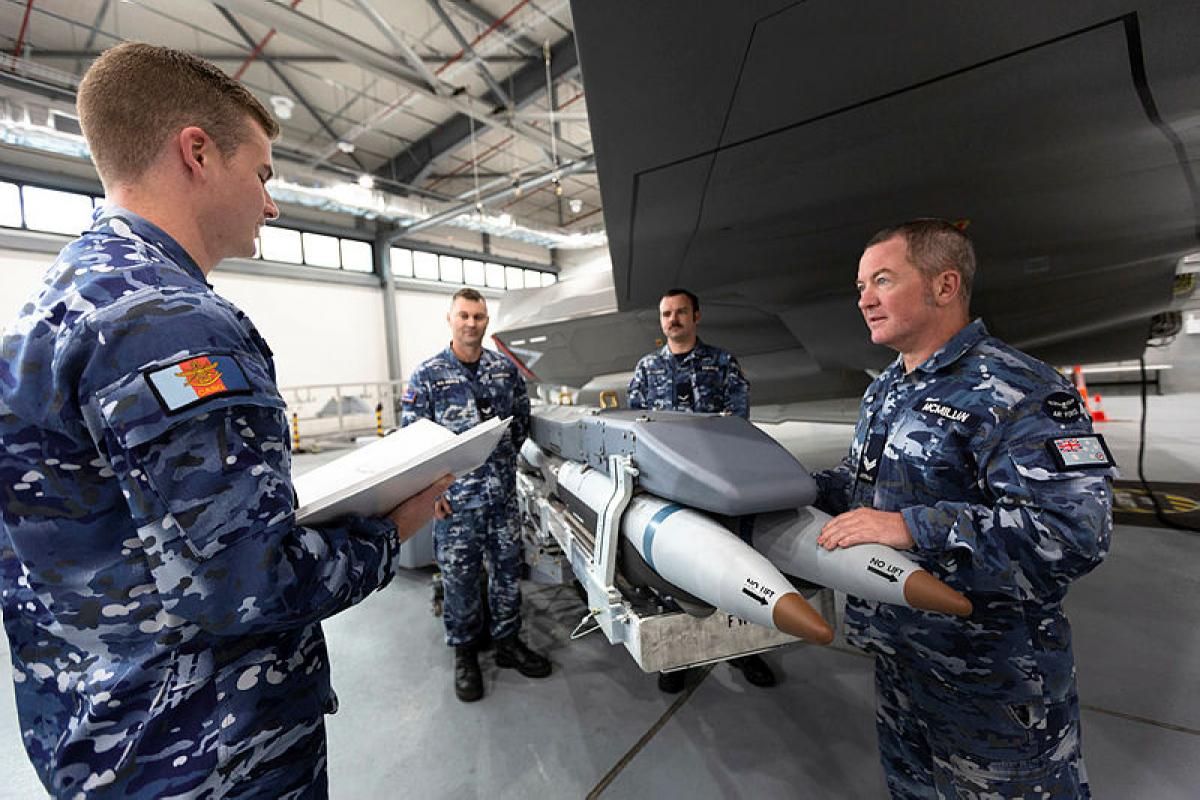By Sergeant Max Bree and Corporal Mark Carter
Bombing capacity of F-35As has quadrupled with the arrival of small diameter bombs introduced to No. 3 Squadron in June.
The GBU-39/B Small Diameter Bomb, Increment 1 (SDB1), packs about 16kg of modern high explosive, guided by GPS-aided inertial navigation.
Wing Commander Simon Bird, Chief Engineer at Aerospace Explosive Ordnance Systems Program Office (AEOSPO) – Explosive Materiel Branch, said it was Air Force’s most advanced bomb and made best use of the F-35A’s internal weapon bay.
“We’ve got a next-generation bomb to go with our fifth-generation fighter,” Wing Commander Bird said.
“Where you used to carry one JDAM [joint direct attack munition] in a position on the aircraft, SDB1 allows you to carry four bombs that each achieve very similar effects. Although at 285lbs the SDB1 is lighter than a 500lb JDAM, it’s highly accurate and packs a more powerful, modern explosive.
“SDB1 is also designed to penetrate harder targets, or can fuse above ground to create area effects.”
The bombs make use of ‘Diamondback’ wings, which deploy after release to provide greater stand-off range.
“With JDAMs you’ve got to be very close to the target to engage it, but because of the wings on SDB1, a single F-35A can engage up to eight separate targets from outside the range they can defend against,” Wing Commander Bird said.
“What’s more, because an SDB1 is carried internally, the F-35A can remain low observable and will not be affected by any extra drag from carrying eight bombs.”
Four bombs are fitted to new bomb release unit racks before loading on the aircraft.
“With an old JDAM, you had to take all the components and build it up, but that takes time, equipment and people,” Wing Commander Bird said.
“You can test the SDB1 without opening the box; you can test them before they’re even shipped to the base you’re going to operate from.
“This weapon comes fully assembled; you basically take it out of the box and load it.”
About 15 armament technicians from No. 3 Squadron received familiarisation training on the bombs before planned test firings in coming months.
AEOSPO’s engineering, logistic and technical staff ensured introduction of the weapons and their delivery was a milestone towards the F-35A’s initial operational capability in 2020.
This article was published by the Australian Department of Defence on August 16, 2019.
Flying Officer Matthew Walker, left, delivers bomb familiarisation training to armament technicians from No. 3 Squadron, from left, Corporal Christopher Sorrensen, Leading Aircraftman Adam Fulmizi and Corporal Simon McMillan. Photo: Sergeant Guy Young


